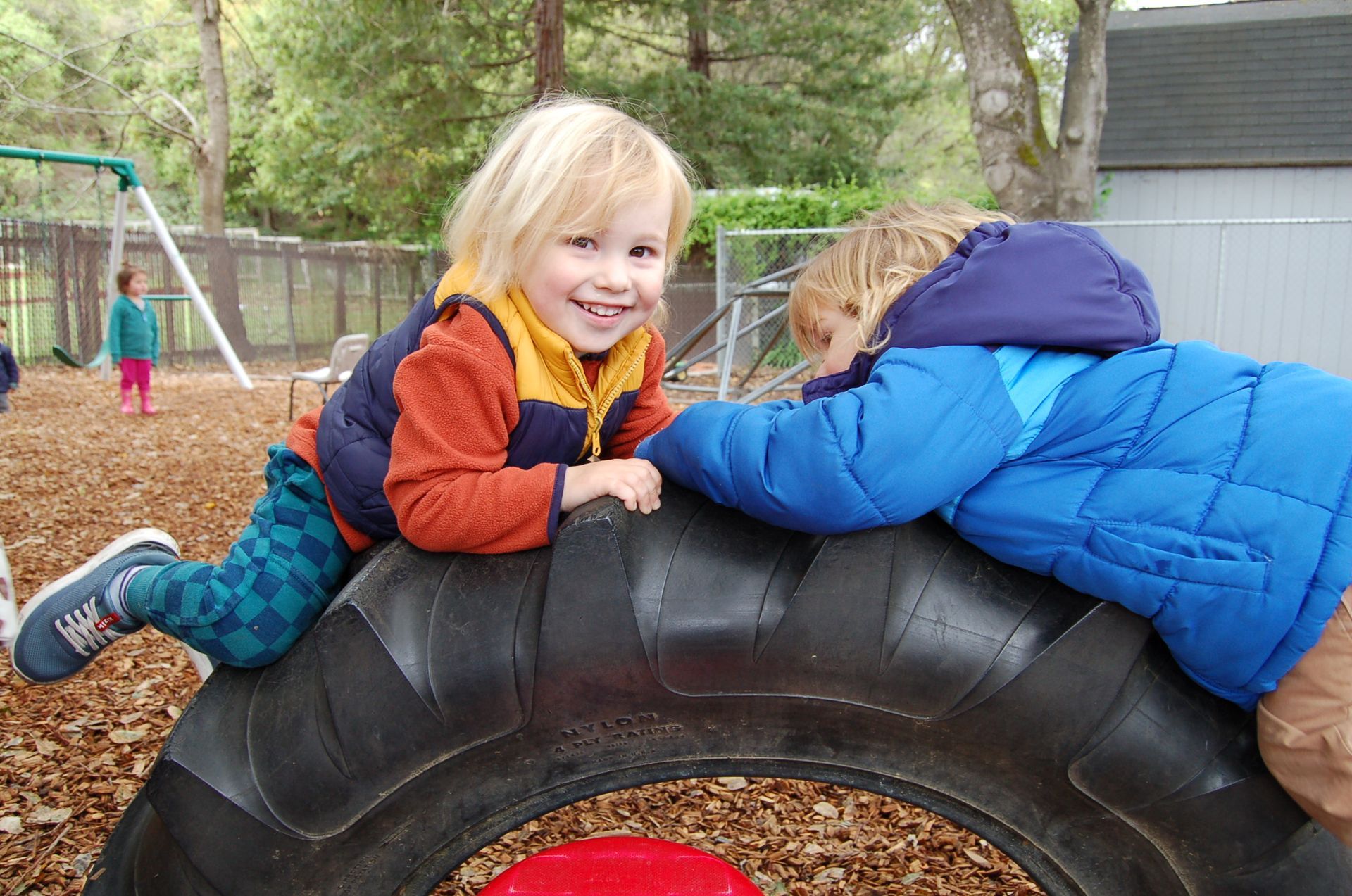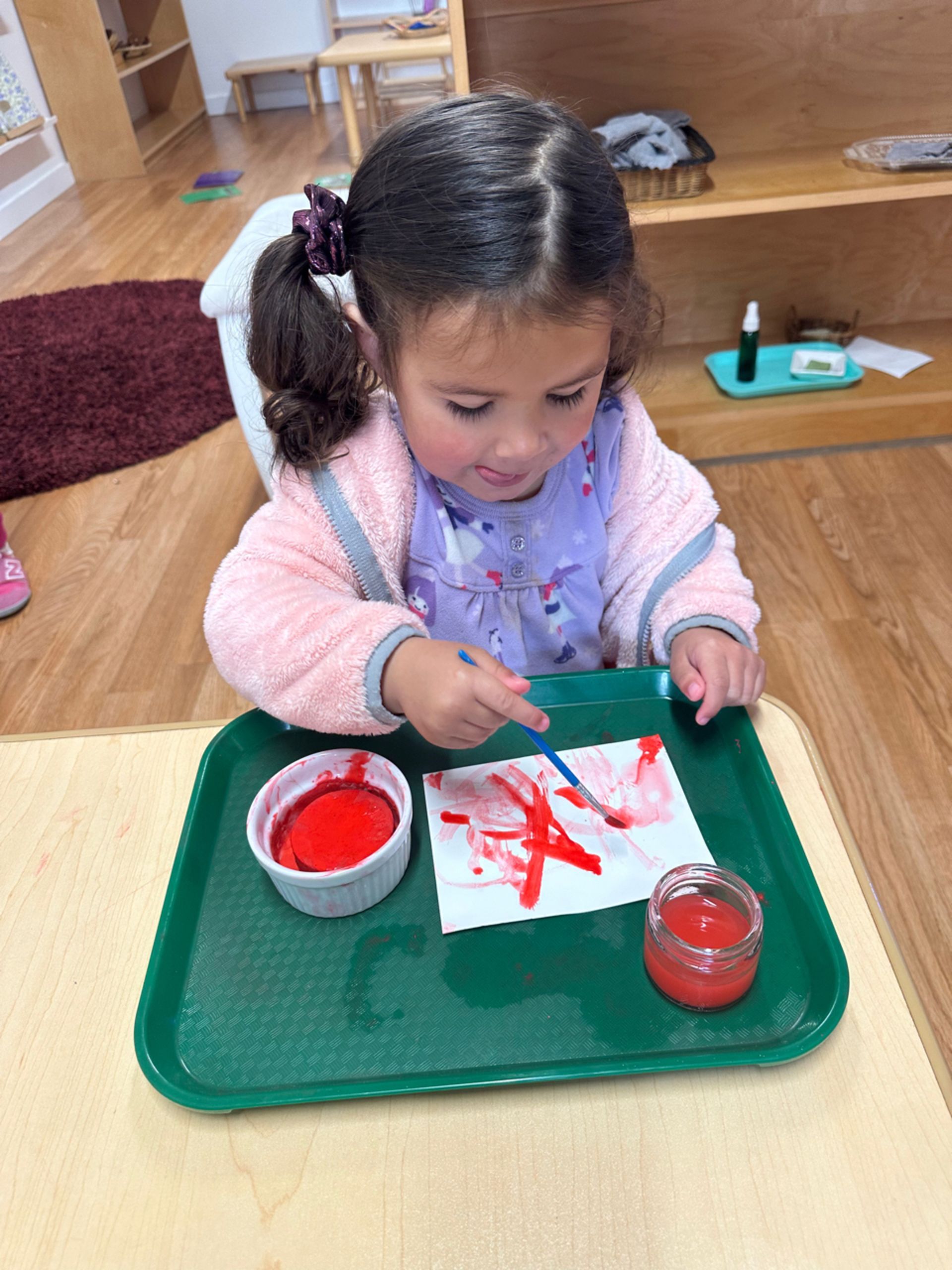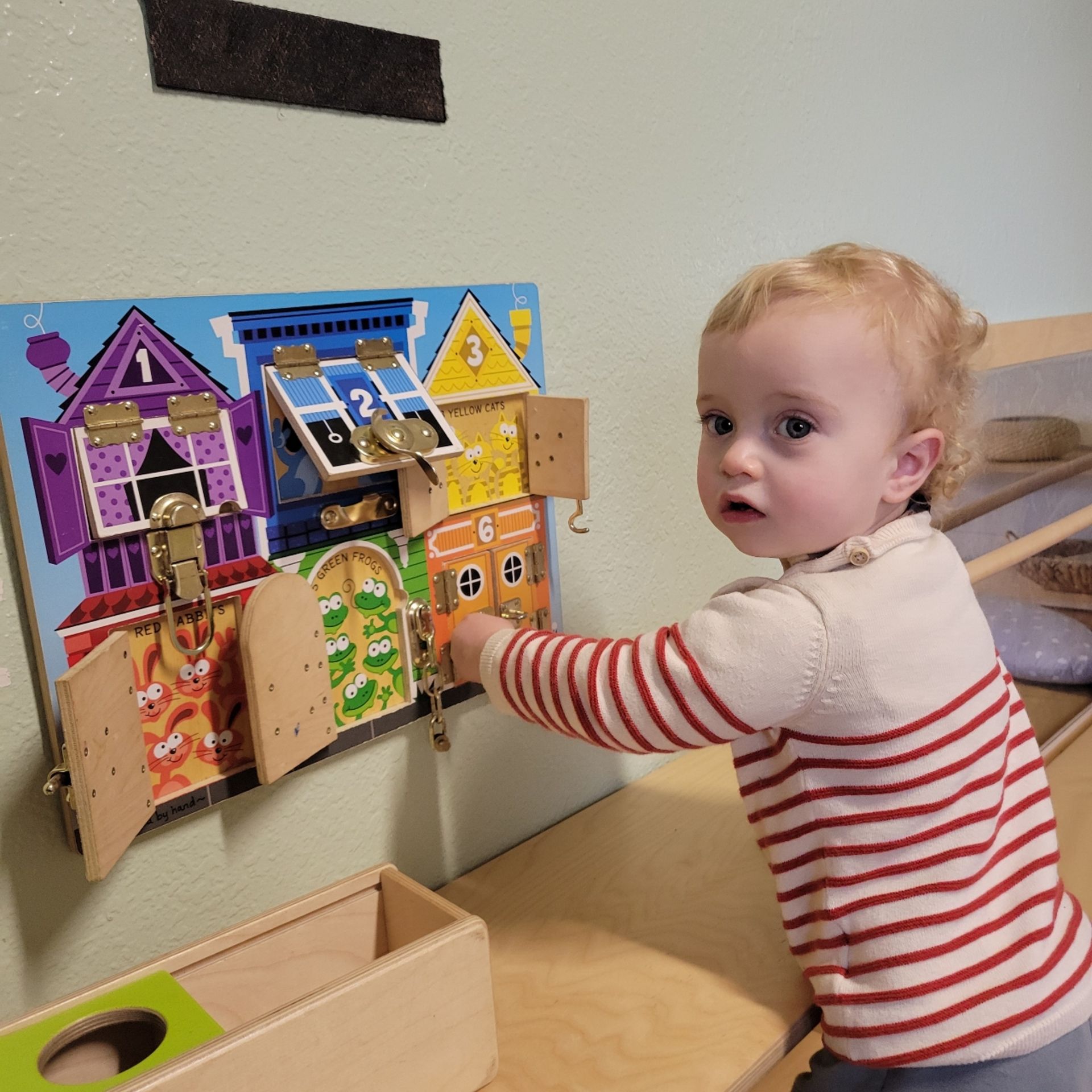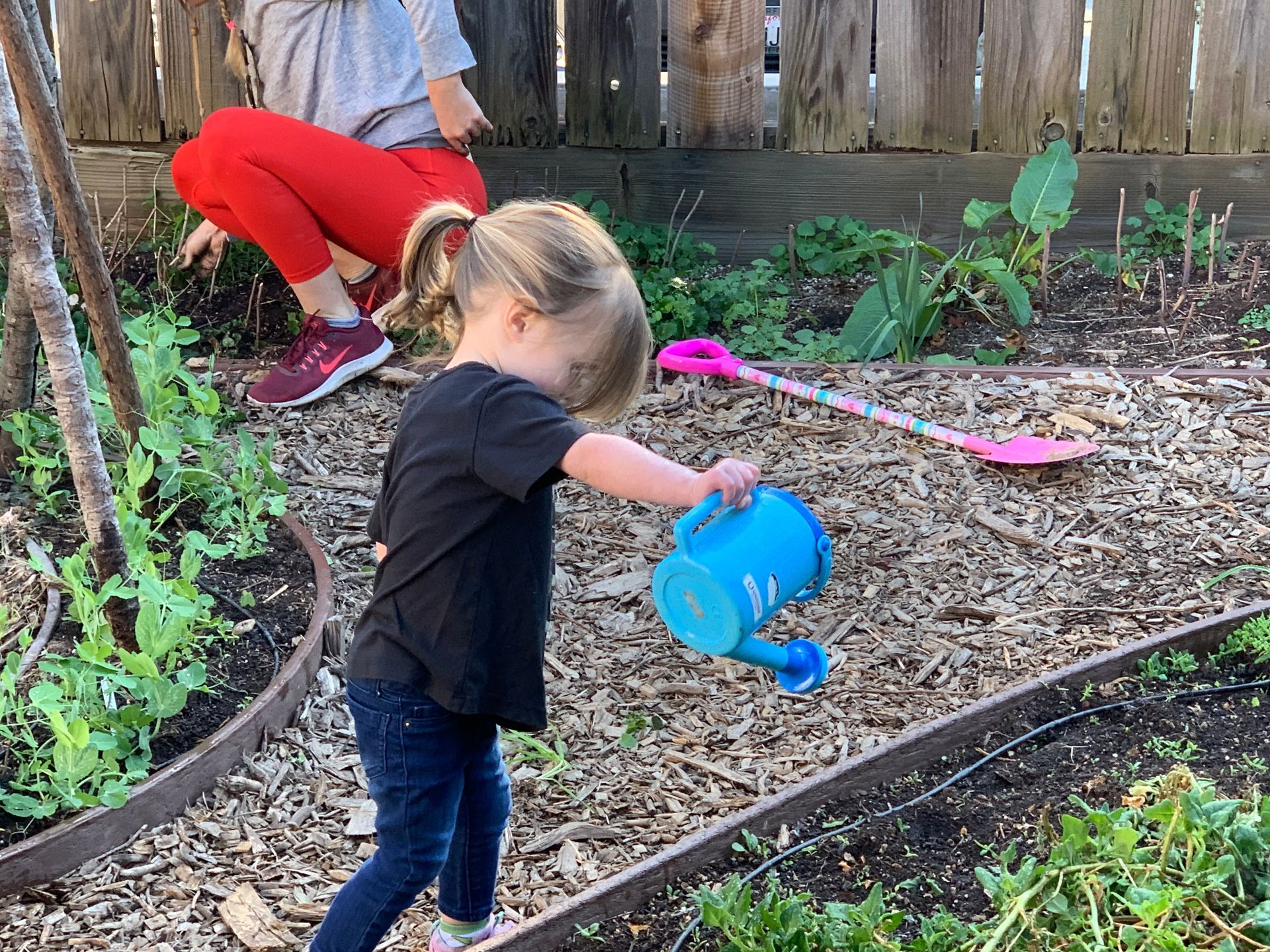Toddler Program
An academic program for students 24-36 months old.
Some refer to this developmental period as “The Terrible Twos.” We disagree; toddlers are terrific. We love everything about them – their energy, determination and curiosity – and purposefully created a very special place for your toddler to learn.
“Help Me To Do It Myself”
Children have an innate desire for independence, a quality that is nurtured in an environment tailored to their size, enabling them to perform tasks by themselves. Utilizing child-sized tools designed for their small hands, they learn to prepare and serve snacks to their friends, while a miniature broom provides the means for them to tidy up independently. They are introduced to essential self-care skills, including hygiene practices and toilet training, as part of their daily routine. Through these activities, your child not only acquires practical life skills and self-assurance but also fosters a deep-seated belief in their ability to effect positive change in the world. This hands-on approach to learning underscores the importance of doing things oneself, emphasizing that the journey towards self-reliance and making a meaningful difference begins with the mastery of simple, everyday tasks.
A Beautiful Environment
Our bright and sunny toddler classrooms are specially designed for your child between the ages of 18 and 36 months. It is a world scaled down to your child’s size. Here, your child paints, cooks, waters the garden, sings songs with friends and plays with materials that develop fine and gross motor coordination.
An Environment Conducive to Learning
Where so many early childhood programs are chaotic and overwhelming, parents are often surprised to see the peaceful tone of our toddler classroom. The calm atmosphere and lack of distraction helps to develop impulse control and concentration, planting the seeds for learning in this classroom and beyond.
A Community
Our students grow together into a close-knit, caring community. When children work, learn and grow together, they learn much more than any of them could learn alone! Making first friends and learning how to function within a community is a life-shaping experience for your child. Your child emerges with strong friendships that will continue as she moves through the rest of the programs in our school.
Absorbing Language
We immerse your child in an environment filled with engaging and enriching dialogue to capitalize on this unique phase of swift language growth. As your child discovers that everything in their surroundings has a name, their curiosity about the world is ignited in a novel manner. Our toddler guides are specifically trained to provide your child with the foundational elements of language, enabling the natural assimilation of new words. This approach lays the groundwork for future skills in reading, writing, and self-expression, fostering an early proficiency and love for language.
A Joyful Experience
Maria Montessori once said, “One test of the correctness of the educational procedure is the happiness of the child.” Take a peek into our Toddler classroom and you will see children who are happy, engaged and deeply connected to their friends and teachers. As a result, your child develops a deep affinity for school and a true love-for-learning.
Practice Makes
Permanent
Our methodology meticulously observes your child to identify the optimal moment for introducing a new skill, followed by giving them ample opportunities to practice—repeating the activity multiple times until they achieve mastery. We treat mistakes as valuable learning moments, fostering an environment rich in patience, trust, and respect. Here, the focus remains steadfastly on the learning journey rather than the end result, ensuring a supportive backdrop for personal growth and skill development.
Ready To Move Up
Sometime between the ages of 2 1/2 to 3 years of age, your child’s language skills and self-expression will develop rapidly; he will express a growing confidence in independence and a keen interest in broader concepts; he will want to know what lies ahead, outside of the Toddler Classroom. At this point, he is ready to move up to the Primary program, for children from the ages of 3 to 6.
Parent Reviews
I just wanted to take a moment to say how much we love Vanessa. She has been an unbelievably positive addition to your school and company culture. She’s infectiously warm and genuinely caring. Just today I was blown away. At the end of last week Vanessa informed us our daughter had been complaining about having some pain and wanted to inform us so we could monitor it and see if there was a problem. Most people would stop there. But when I dropped off Viv this morning, the first thing she asked me was following up to see if she was ok, if there was anything she could do. Wow. I just can’t tell you how much that type of genuine care means to us. We have also noticed Vivienne’s development sky rocket since being under her tutelage. We are so happy to be a part of NWM and I just have to say Vanessa is making it so special. Bravo,
— Chris Costas
I just want to say what an amazing experience we have had at Nature's Way. We feel so lucky to have found your school and are so impressed with the communication and love from the teachers. The entire willow classroom is just amazing, and my husband and I have talked about how sad we are to leave. Our daughter lights up when we drop her off and that’s all we can ask for in a place caring for our daughter. Thank you so much for everything!
— Lauren and Kyle Babinski




